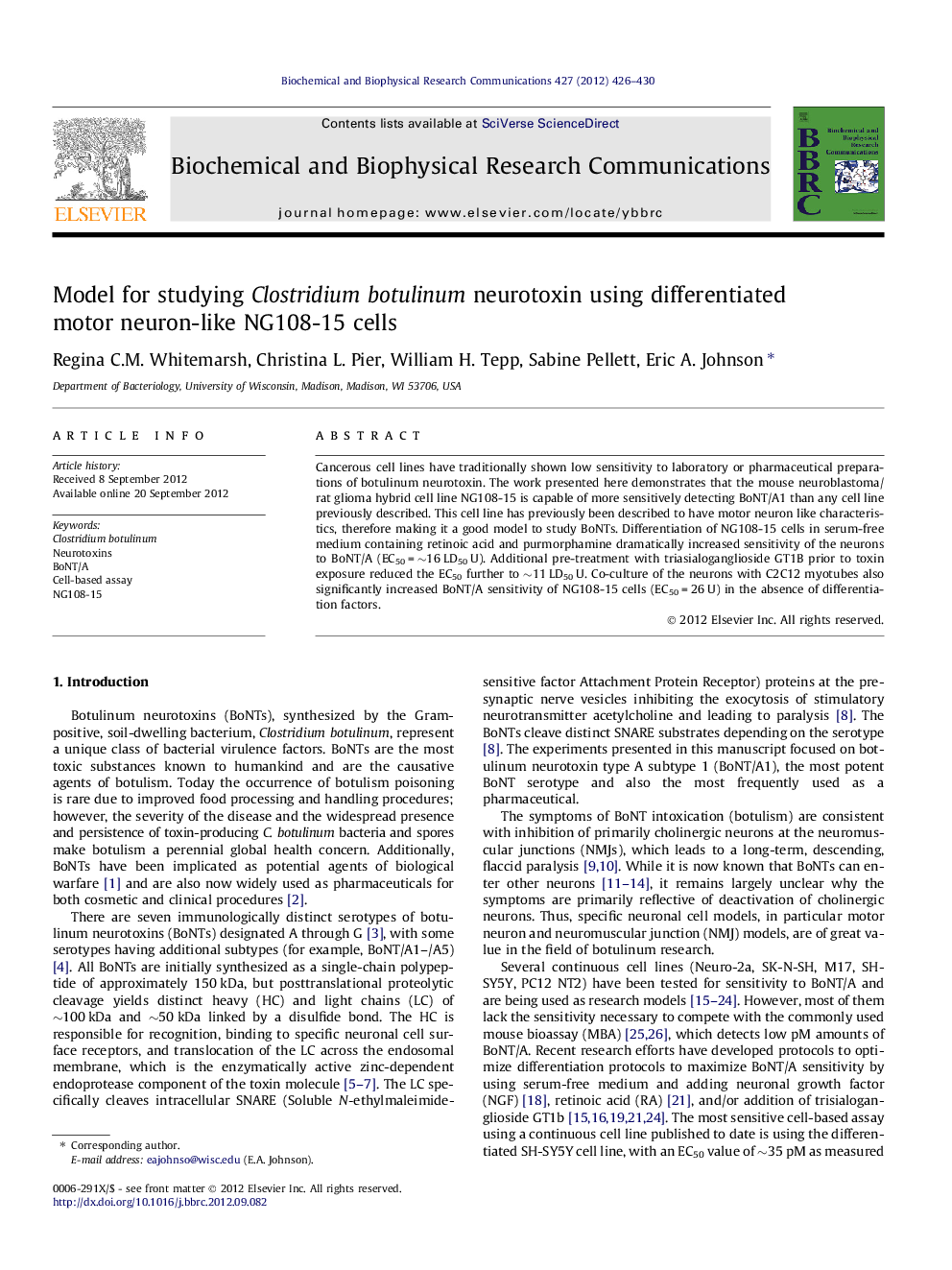| Article ID | Journal | Published Year | Pages | File Type |
|---|---|---|---|---|
| 1929251 | Biochemical and Biophysical Research Communications | 2012 | 5 Pages |
Cancerous cell lines have traditionally shown low sensitivity to laboratory or pharmaceutical preparations of botulinum neurotoxin. The work presented here demonstrates that the mouse neuroblastoma/rat glioma hybrid cell line NG108-15 is capable of more sensitively detecting BoNT/A1 than any cell line previously described. This cell line has previously been described to have motor neuron like characteristics, therefore making it a good model to study BoNTs. Differentiation of NG108-15 cells in serum-free medium containing retinoic acid and purmorphamine dramatically increased sensitivity of the neurons to BoNT/A (EC50 = ∼16 LD50 U). Additional pre-treatment with triasialoganglioside GT1B prior to toxin exposure reduced the EC50 further to ∼11 LD50 U. Co-culture of the neurons with C2C12 myotubes also significantly increased BoNT/A sensitivity of NG108-15 cells (EC50 = 26 U) in the absence of differentiation factors.
► Cell-based models for toxins testing are a rapidly advancing field in toxicology. ► NG108-15 cells can be differentiated to form motor neuron-like cells. ► Differentiated NG108-15 cells show great sensitivity to botulinum neurotoxin. ► Differentiated cells will have application in basic research and drug development.
